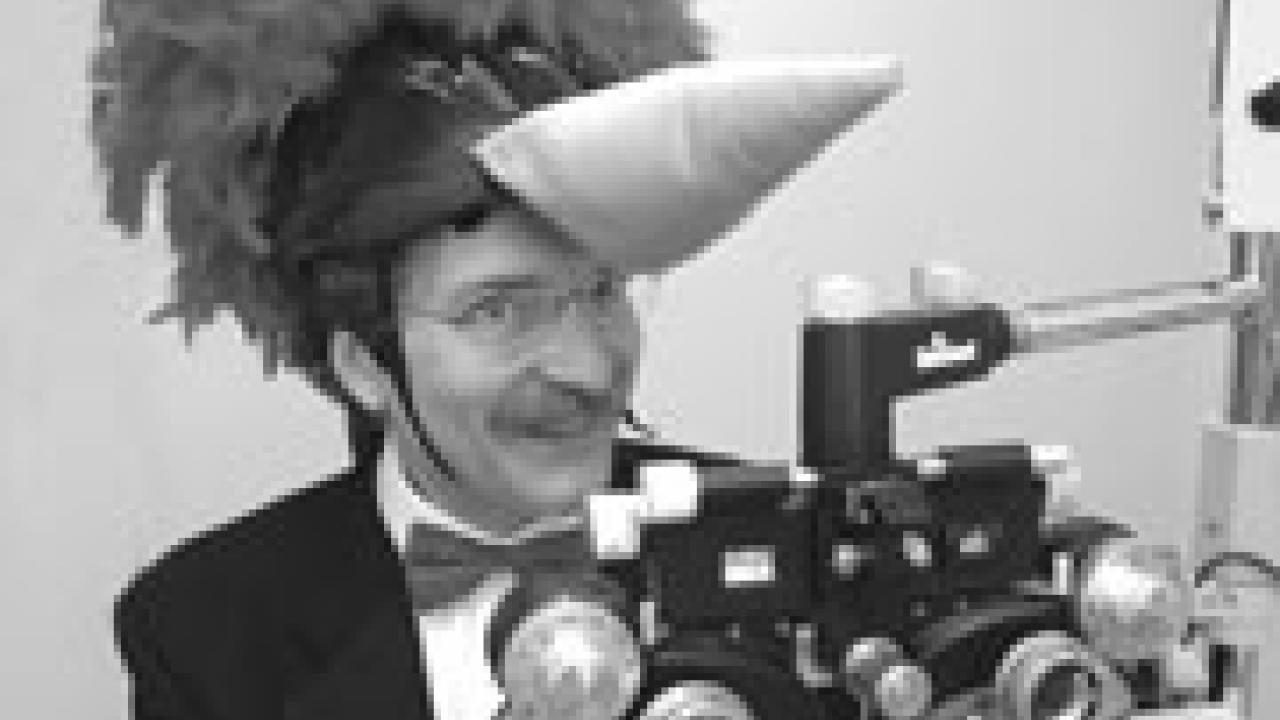When your daily routine involves slamming your head against a tree, you might expect to get an occasional headache. Such is the fate of woodpeckers as they search for worms, grubs and insects.
However, woodpeckers experience no ill effects from their head-banging ways and, for explaining why, UC Davis ophthalmology professor Ivan Schwab was chosen for the 2006 Ig Nobel Prize in Orinithology, which was presented Oct. 6 at Harvard University.
A parody of the Nobel prizes, the Ig Nobel Prizes are awarded annually for 10 achievements that "first make people laugh, and then make them think." Bestowed by the scientific humor journal Annals of Improbable Research, the awards are intended to "celebrate the unusual, honor the imaginative and spur people's interest in science, medicine and technology." This is the first year that the journal has awarded a prize in ornithology. In keeping with tradition, six genuine Nobel laureates presented this year's Ig Nobel Prizes.
Schwab, who delivered his acceptance speech while wearing a woodpecker headdress, received the prize for authoring "Cure for a Headache," a study published in the British Journal of Ophthalmology in 2002. He shares the prize with the late psychiatrist Phillip R.A. May, whose previous research formed the basis for the study written by Schwab.
In addition to accepting his Ig Nobel Prize, Schwab, along with the other award winners, took part in the Ig Informal Lectures on Oct. 7 at the Massachusetts Institute of Technology. At this event, the prizewinners delivered five-minute lectures in which they attempted "to explain what they did, and why they did it," followed by questions and answers with the audience.
Woodpeckers interested May and Schwab because the birds do not experience retinal detachments, brain damage and spinal cord injuries, damage that one would expect as a result from the birds' repeated hammering. In his study, Schwab noted that North America's largest woodpecker may strike a tree at the rate of 20 times a second and up to 12,000 times a day, with forces as high as 1,200 g's with each impact.
"That is equivalent to striking a wall at 16 miles an hour — face first — each time," Schwab wrote.
In his research, May found that woodpeckers have evolved several unique mechanisms that prevent them from inflicting harm upon themselves. Among them are a thick, bony skull with relatively spongy bone, and cartilage at the base of the mandible (lower jaw bone) that partially cushions the incessant blows. The mandibles are attached to the skull by powerful muscles that contract a millisecond before each strike, creating a tight but cushioned structure at the moment of impact and distributing the force of the blow to the base and posterior regions of the skull, thus bypassing the brain.
Schwab has a special interest in comparative ophthalmology, a field in which he and others examine how insects, birds, reptiles and other nonhuman animals process images.
"In fact, many advances in optics and high-tech instrumentation have come from comparative ophthalmology," Schwab said. For example, he said, studies in the 1970s of the square-shaped facets of the surface of the eyes of lobsters are being used in the development of X-ray optics, including X-ray lithography and X-ray telescopes used in outer space. Also, studies of woodpeckers' thick skulls have provided insight into protecting people from head injuries.
Schwab, who specializes in disorders of the cornea, helped develop a bioengineered corneal transplant procedure that restored or improved eyesight in patients suffering from severe corneal damage. The technique involves growing replacement cornea tissue in a laboratory dish. Ultimately, the technique may allow tissue engineers to produce readily available, "off-the-shelf" cornea replacements that can be easily transplanted into patients with severe cornea damage.
David Ong is a senior public information officer for the UC Davis Health System.
Media Resources
Clifton B. Parker, Dateline, (530) 752-1932, cparker@ucdavis.edu
